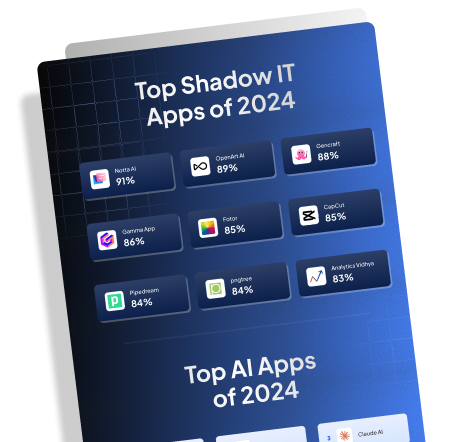Are you concerned that your network security might not be keeping up with ever-evolving threats? The truth is, it’s a complex landscape out there, and many businesses are struggling to stay protected. How can a network security provider improve IT security when threats are constantly changing? We get it—security isn’t straightforward, and the stakes are incredibly high. In this article, we’ll cut through the noise and provide actionable insights to help you understand how a dedicated provider can bolster your defenses.
A network security provider can significantly enhance IT security by offering a suite of comprehensive tools designed to monitor, protect, and secure network infrastructure. But how exactly do they achieve this?
Firstly, network security providers excel at identifying and mitigating threats. They use advanced technologies like intrusion detection systems (IDS) and intrusion prevention systems (IPS) to spot unusual activity. These tools help detect potential breaches before they cause harm, ensuring that vulnerabilities are addressed promptly. Are your current systems capable of this level of vigilance?
Next, these providers enforce security policies. Establishing and maintaining strict security protocols helps organizations avoid risky behaviors. For example, network segmentation and access control lists (ACLs) ensure that only authorized users can access sensitive information. This layered approach acts as a barrier, reducing the chance of unauthorized access.
Compliance is another crucial area. Network security providers help organizations adhere to regulations like GDPR, HIPAA, and PCI DSS. Compliance not only avoids legal pitfalls but also instills trust with customers. Aren’t these regulations challenging to navigate alone? Providers simplify this complexity by implementing necessary safeguards automatically.
Real-time monitoring and analytics further bolster IT security. By continuously tracking network traffic, these tools can provide insights into potential issues before they escalate into major problems. Wouldn’t you rather know about a vulnerability before it gets exploited? Real-time data empowers IT teams to act swiftly, minimizing damage and downtime.
Keeping up with evolving threats is a daunting task. Network security providers constantly update their systems to defend against new vulnerabilities and cyberattacks. They utilize frameworks like kill chains and zero trust to better understand and counteract threats. Ever wondered how much time and resources it takes to stay ahead of cybercriminals? Leave that to the experts.
Network security providers make the network more resilient by continuously fine-tuning security measures. This ongoing process assures that defenses remain robust against ever-changing threats, providing peace of mind and ensuring business continuity.
In summary, a network security provider improves IT security by identifying and mitigating threats, enforcing security policies, maintaining compliance with regulations, and offering real-time monitoring and analytics. These measures make the network resilient to cyberattacks. Recognizing the complexity of cybersecurity, these providers offer invaluable tools and expertise to manage it effectively.
Best Practices for Maximizing IT Security with a Network Security Provider
To further enhance the foundational improvements mentioned earlier, applying specific best practices can amplify your IT security. Here’s a structured approach, rich with actionable steps, to fortify your network:
1. Conduct Regular Security Audits
Why It Matters: Regular security audits identify potential security gaps and vulnerabilities before they can be exploited. Conducting regular audits ensures your defenses are up-to-date.
Action Step: Schedule bi-annual or quarterly security assessments. Leverage your network security provider’s expertise to conduct comprehensive audits, including penetration testing and vulnerability assessments.
2. Implement Multi-Factor Authentication (MFA)
Why It Matters: MFA adds an additional layer of security, making it significantly more challenging for unauthorized users to gain access to your network.
Action Step: Partner with your network security provider to integrate MFA across all critical systems and applications. Ensure all users are educated on the importance of MFA and any associated processes.
3. Emphasize Employee Training and Awareness
Why It Matters: Human error is often the weakest link in the security chain. Regular, comprehensive training keeps employees informed about the latest threats and security best practices.
Action Step: Develop a mandatory security awareness program that includes phishing simulations, password management workshops, and incident reporting protocols. Regularly update training materials to reflect new threats.
4. Establish a Formal Incident Response Plan
Why It Matters: Having a clear, efficient response plan minimizes damage and downtime in the event of a security breach.
Action Step: Work with your provider to create and routinely test an incident response plan. Ensure it covers key areas such as communication protocols, roles and responsibilities, and post-incident analysis.
5. Use Advanced Threat Detection and Prevention Tools
Why It Matters: Sophisticated threats require equally advanced defenses. Utilizing cutting-edge tools ensures your network is protected against the latest malware, ransomware, and cyberattack methodologies.
Action Step: Leverage your provider’s offerings, such as IDS/IPS, Anti-Malware, and Endpoint Detection and Response (EDR) solutions. Ensure these tools are integrated for comprehensive threat management.
6. Prioritize Network Segmentation
Why It Matters: Network segmentation limits the spread of malware and restricts unauthorized access to sensitive data.
Action Step: Implement network segmentation to isolate critical assets. Use VLANs (Virtual Local Area Networks) and ACLs (Access Control Lists) to control traffic flow. Continually review and adjust segmentation strategies based on emerging threats.
7. Regularly Update and Patch Systems
Why It Matters: Outdated software presents vulnerabilities that can be easily exploited by cybercriminals. Keeping systems updated closes these security gaps.
Action Step: Establish a patch management schedule. Work with your provider to automate and manage updates for all critical systems, ensuring patches are applied promptly without disrupting business operations.
8. Enable Real-Time Monitoring and Analytics
Why It Matters: Real-time monitoring allows for the immediate detection and response to threats, minimizing potential damage.
Action Step: Utilize your provider’s capabilities for continuous network traffic analysis. Set up alerts for suspicious activities






